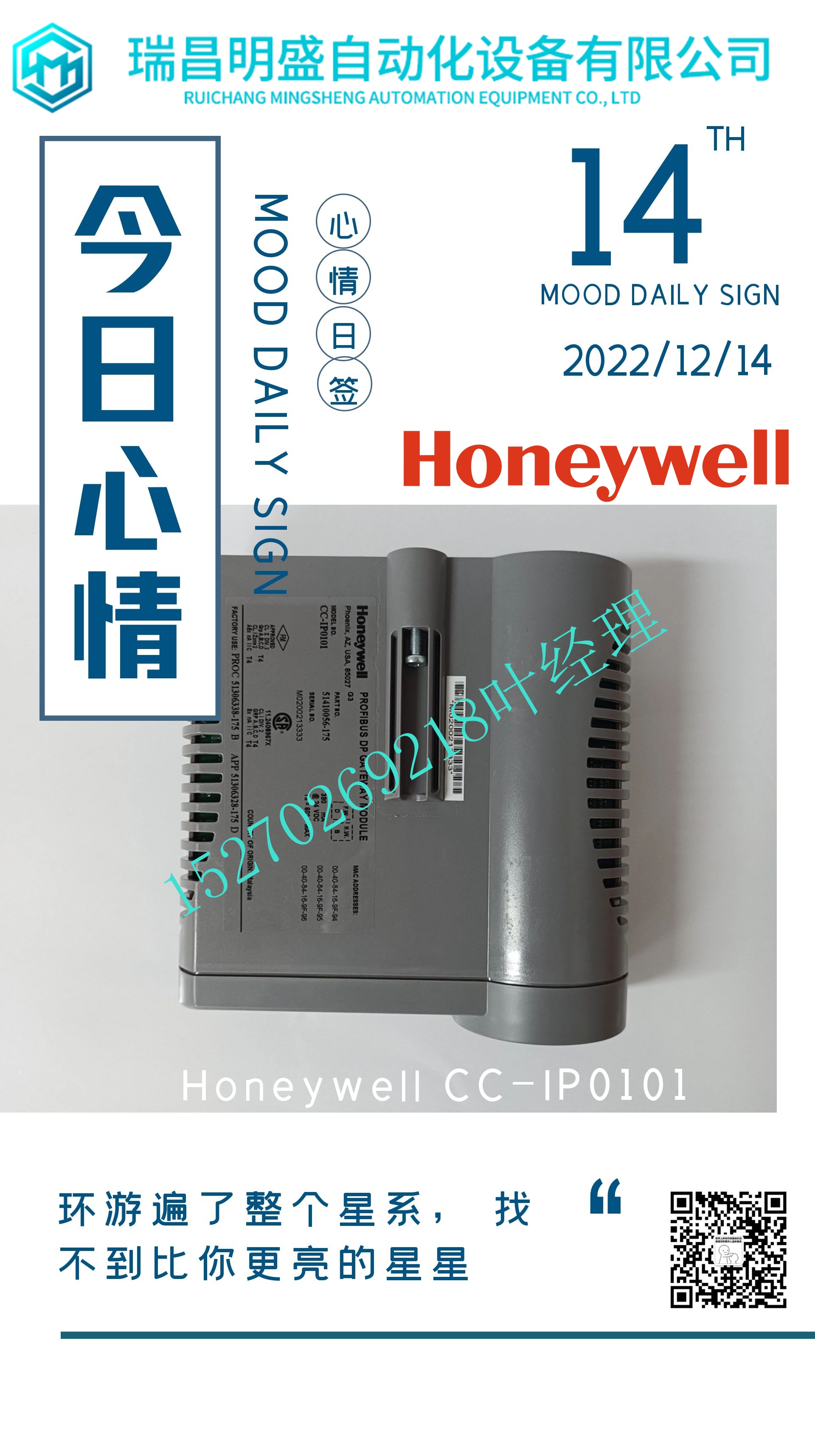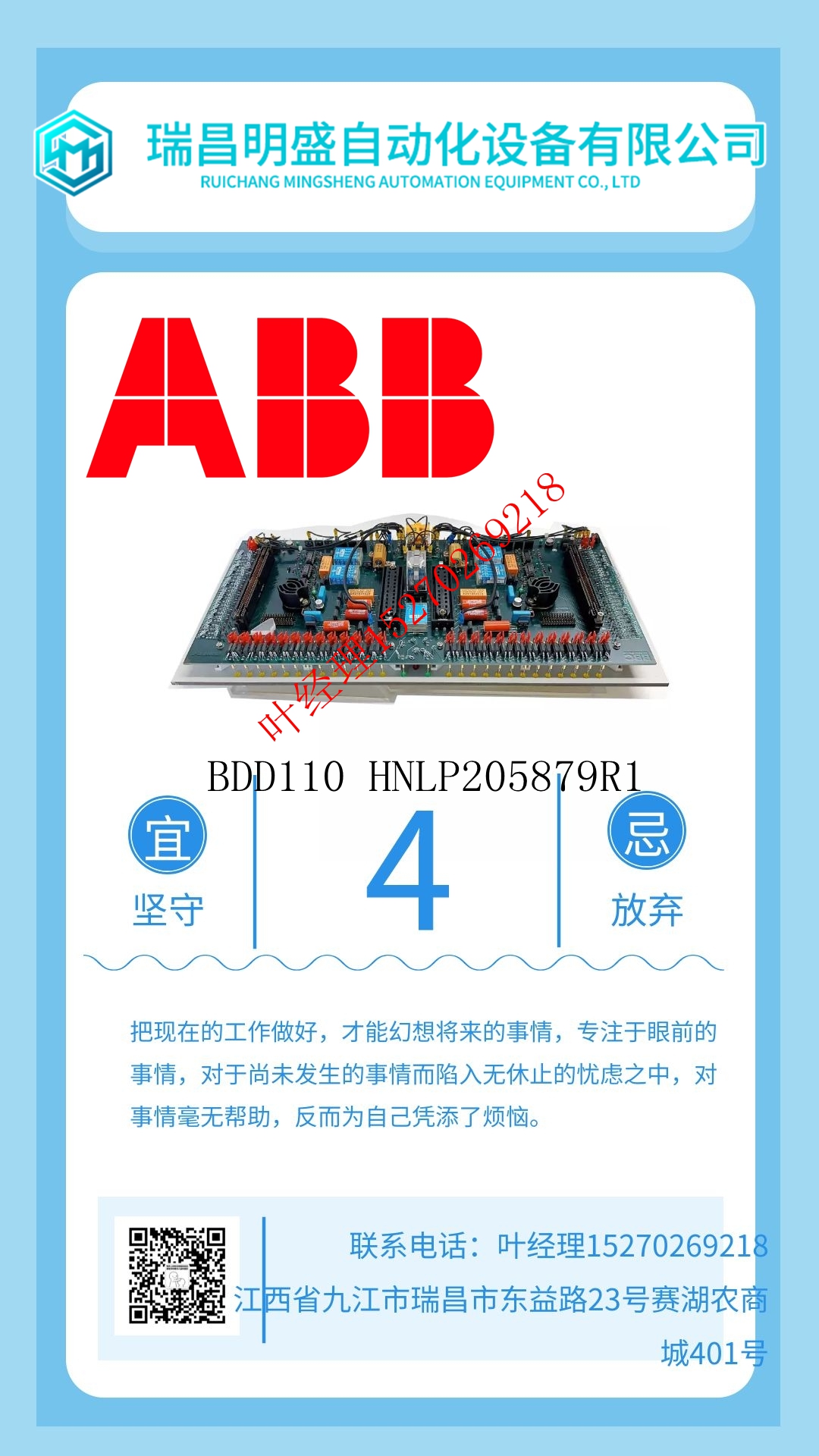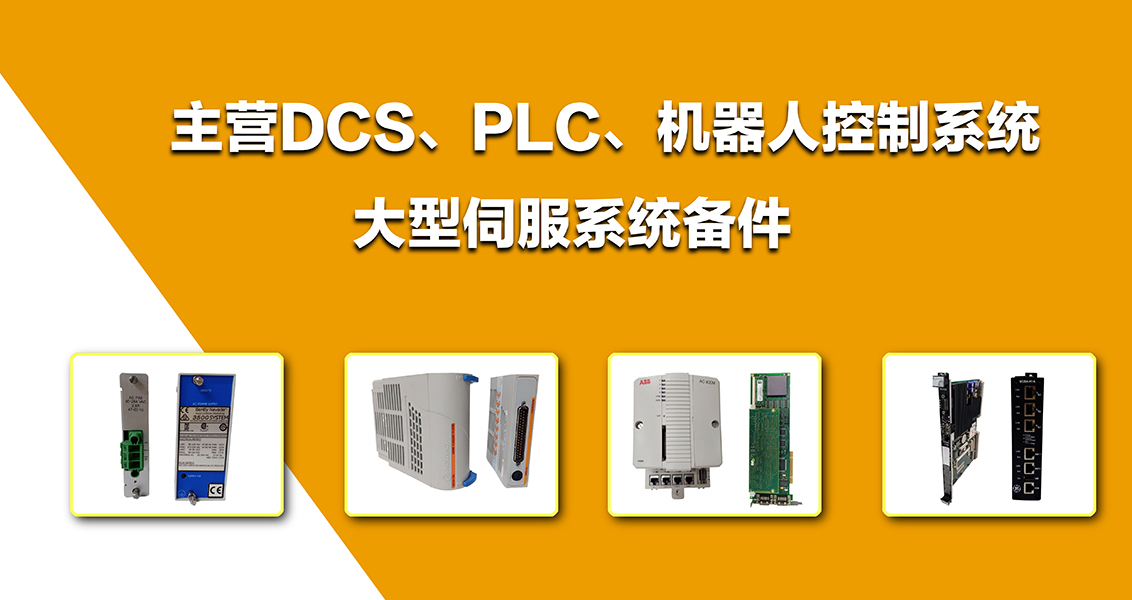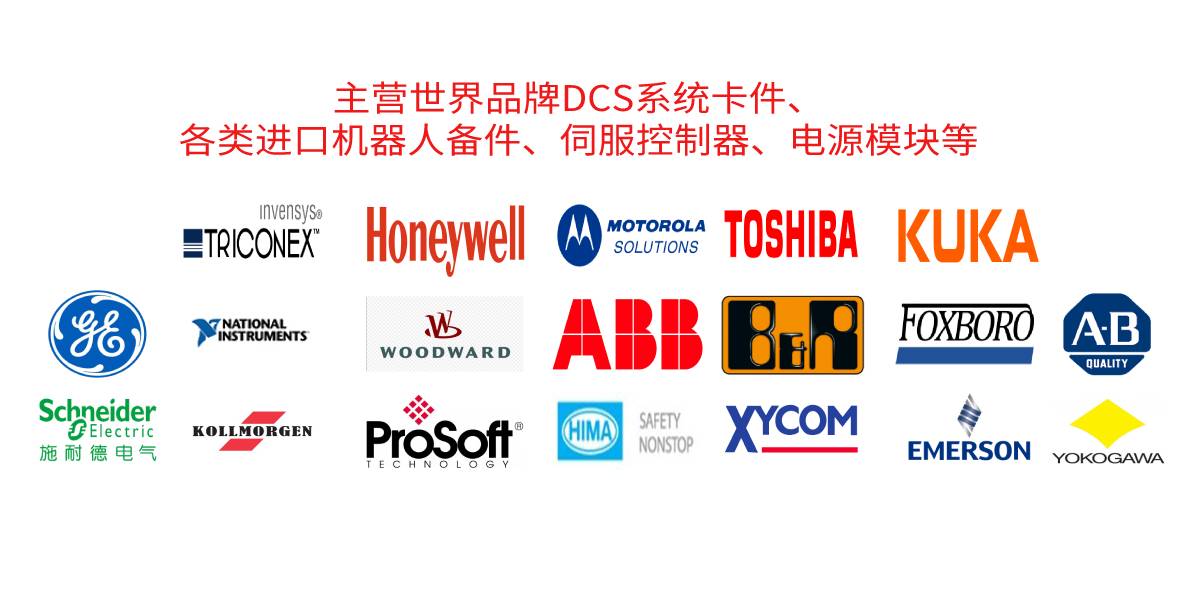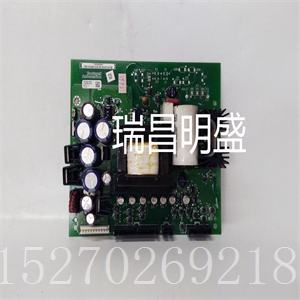HA-E0105-653-097机械设备卡件
1.❏ 控制器I/O–两个串行端口(一个EIA-232-D DCE;一个EIA-332-D DCE/DTE或EIA-530 DCE/DTD或EIA-422 DCE/DTT或EIA-485)–串行端口控制器(Zilog Z85230)–带32位本地总线突发直接内存访问(DMA)的可选SCSI总线接口(NCR 53C710控制器)–带64位本地总线DMA的可选LAN以太网收发器接口(Intel 82596CA控制器)–四个MVIP工业包与DMA接口❏ VMEbus接口–用于快速本地内存的DMA—VME总线传输(A16/A24/A32、D16/D32(D16/D32/D64 BLT)❏ 开关和发光二极管(LED)–两个按钮开关(ABORT和RESET)–八个LED(FAIL、STAT、RUN、SCON、LAN、FUSE、SCSI和VME)简介http://www.mcg.mot.com/literature1-5 1规格MVME162FX嵌入式控制器的一般规格如下表1-1所示。注意:有关更多信息,请参阅高温操作的冷却要求和特殊注意事项章节。表1-1:。MVME162FX规格特性规格功率要求(带PROM;无IP)+5 Vdc(±5%),典型值3.5 A,最大值4.5 A+12 Vdc(±5%),最大值100 mA-12 Vdc(±%),最高值100 mA。工作温度0°至70°C出口空气,强制空气冷却(见下文注释)存储温度-40°至+85°C相对湿度5%至90%非冷凝物理尺寸PC板(仅带夹层模块)高度深度厚度PC板(带连接器和前面板)高度深度厚度双高VME板9.187英寸(233.35 mm)6.299英寸(160.00 mm)0.662英寸(16.77 mm)10.309英寸(261.85 mm)7.400英寸(188 mm)0.800英寸(20.32 mm)1-6计算机组文献中心网站板级硬件说明1冷却要求Motorola MVME162FX嵌入式控制器经过设计和测试,能够在0°至55°C(32°至131°F)的进气温度范围内可靠运行。这是通过以100 CFM轴流风扇通常可达到的速度强制空气冷却实现的。温度鉴定在标准摩托罗拉VME系统底盘中进行。25瓦负载板插入两个卡槽(每侧一个),与被测板相邻,以模拟高功率密度系统配置。一个由三个轴流风扇组成的组件,每个风扇的额定功率为100 CFM,直接放置在VME卡罩的下方。在风扇组件和卡罩之间测量进气温度,其中进气气流首先遇到被测控制器。当控制器受到环境温度变化时,执行测试软件。监控关键、高功率密度集成电路的外壳温度,以确保不超过组件供应商的规范。而冷却所需的确切空气流量取决于环境空气温度以及电路板和其他热源的类型、数量和位置;通常可以在10 CFM和490 LFM流过控制器的情况下实现充分的冷却。在最高环境温度较低的环境中,需要较少的气流来冷却控制器。在更有利的热条件下,可以在高于55°C的温度下可靠地操作控制器,同时增加空气流量。需要注意的是,有几个因素(除了风扇的额定CFM)决定了流经控制器的空气的实际体积和速度。高温操作的特殊注意事项本节提供了与MVME162FX嵌入式控制器的应用程序可能会受到高温影响的用户相关的信息。控制器的设计使用商业级设备。因此,它可以在环境空气温度为0°C至70°C的环境中运行。有许多因素会影响引言中的环境温度http://www.mcg.mot.com/literature1-7控制器上的1个部件:进气温度;气流特性;Industry Pack模块的数量、类型和位置;MVME945 12槽VME机箱中开发了MVME162FX嵌入式控制器(MVME162-513)的实验室温度曲线。该控制器配备有一个GreenSpring IP双P/T模块(位置a)和三个GreenSpring IP-488模块(位置b、c和d)。25瓦负载板安装在被测控制器的每一侧附近。控制器和IP双P/T模块之间的出口空气速度约为200 LFM。在此情况下
1 ❏ Controller I/O – Two serial ports (one EIA-232-D DCE; one EIA-232-D DCE/DTE or EIA-530 DCE/DTE or EIA-422 DCE/DTE or EIA-485) – Serial port controller (Zilog Z85230) – Optional SCSI bus interface with 32-bit local bus burst Direct Memory Access (DMA) (NCR 53C710 controller) – Optional LAN Ethernet transceiver interface with 32-bit local bus DMA (Intel 82596CA controller) – Four MVIP Industry Pack interfaces with DMA ❏ VMEbus interface (note that controller boards may be specially ordered without the VMEbus interface) – VMEbus system controller functions – VMEbus interface to local bus (A24/A32, D8/D16/D32 (D8/D16/D32/D64 BLT) (BLT = Block Transfer) – Local bus to VMEbus interface (A16/A24/A32, D8/D16/D32) – VMEbus interrupter – VMEbus interrupt handler – Global CSR for interprocessor communications – DMA for fast local memory - VMEbus transfers (A16/A24/A32, D16/D32 (D16/D32/D64 BLT) ❏ Switches and Light-Emitting Diodes (LEDs) – Two pushbutton switches (ABORT and RESET) – Eight LEDs (FAIL, STAT, RUN, SCON, LAN, FUSE, SCSI, and VME) Introduction http://www.mcg.mot.com/literature 1-5 1 Specifications General specifications for the MVME162FX Embedded Controller are listed below in Table 1-1. NOTE: Refer to the sections onCooling Requirements and Special Considerations for Elevated Temperature Operation for additional information. Table 1-1. MVME162FX Specifications Characteristics Specifications Power requirements (with PROM; without IPs) +5 Vdc (± 5%), 3.5 A typical, 4.5 A max. +12 Vdc (± 5%), 100 mA max. -12 Vdc (± 5%), 100 mA max. Operating temperature 0° to 70° C exit air with forced air cooling (see NOTE below) Storage temperature -40° to +85° C Relative humidity 5% to 90% noncondensing Physical dimensions PC board (with mezzanine module only) Height Depth Thickness PC board (with connectors and front panel) Height Depth Thickness Double-high VMEboard 9.187 inches (233.35 mm) 6.299 inches (160.00 mm) 0.662 inch (16.77 mm) 10.309 inches (261.85 mm) 7.400 inches (188 mm) 0.800 inch (20.32 mm) 1-6 Computer Group Literature Center Web Site Board Level Hardware Description 1 Cooling Requirements The Motorola MVME162FX Embedded Controller is designed, and tested to operate reliably with an incoming air temperature range from 0° to 55° C (32° to 131° F). This is accomplished with forced air cooling at a velocity typically achievable by a100 CFM axial fan. Temperature qualification is performed in a standard Motorola VME system chassis. 25 watt load boards are inserted in two card slots (one on each side), adjacent to the board under test, to simulate a high power density system configuration. An assembly of three axial fans, rated at 100 CFM per fan, is placed directly under the VME card cage. The incoming air temperature is measured between the fan assembly and the card cage, where the incoming airstream first encounters the controller under test. Test software is executed as the controller is subjected to ambient temperature variations. Case temperatures of critical, high power density integrated circuits are monitored to ensure the component vendor’s specifications are not exceeded. While the exact amount of air flow required for cooling depends on the ambient air temperature and the type, number, and location of boards and other heat sources; adequate cooling can usually be achieved with 10 CFM and 490 LFM flowing over the controller. Less air flow is required to cool the controller in environments having lower maximum ambient temperatures. Under more favorable thermal conditions, it may be possible to operate the controller reliably at higher than 55° C with increased air flow. It is important to note that there are several factors (in addition to the rated CFM of the fan), which determine the actual volume and speed of air flowing over the controller. Special Considerations for Elevated Temperature Operation This section provides information pertinent to users whose applications for the MVME162FX Embedded Controller may subject it to high temperatures. The controller’s design uses commercial grade devices. Therefore, it can operate in an environment with ambient air temperature from 0° C to 70° C. There are many factors that affect the ambient temperature felt by Introduction http://www.mcg.mot.com/literature 1-7 1 components on the controller: inlet air temperature; air flow characteristics; number, types, and locations of Industry Pack modules; power dissipation of adjacent boards in the system, etc. A laboratory temperature profile of the MVME162FX Embedded Controller (MVME162-513) was developed in an MVME945 12-slot VME chassis. This controller was equipped with one GreenSpring IP-Dual P/T module (position a) and three GreenSpring IP-488 modules (positions b, c, and d). A 25 watt load board was installed adjacent to each side of the controller under test. The exit air velocity was approximately 200 LFM between the controller and the IP-Dual P/T module. Under these circumstances, a 10° C rise between the inlet and exit air was observed. At 70° C exit air temperature (60° C inlet air), the junction temperatures of devices on the controller were calculated (from the measured case temperatures) and did not exceed 100° C. ! Caution For elevated temperature operation, the user must perform similar measurements and calculations to determine what operating margin exists for any specific environment. The following are
